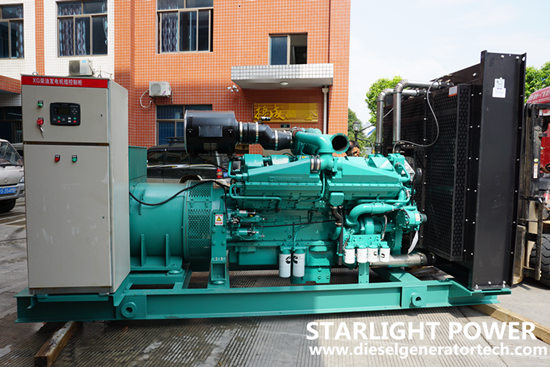Sensors are very important for diesel generator set to monitor data by control panel. If incorrect use and selection, the diesel generator set may cause faults. Today Starlight Power will introduce the sensors of diesel generators. Hope the article is helpful to you.
What is main sensor in a diesel generator?
1.Oil pressure sensor.
Its function is mainly to monitor oil pressure, then we can know the capacity of oil. If the lubricating oil is less, the wear of the generator set will increase, resulting in the reduction of the service life of the diesel generator set.
2.Coolant temperature sensor.
Its function is mainly to monitor coolant temperature, so that we can know whether the temperature of the water tank exceeds the normal value. Normal value is generally 85℃. If the temperature of the water tank is too high, the cylinder block will be heated too high, which will damage the diesel generator set and cause power failure.
3.Speed sensor.
Its function is mainly to monitor whether the flywheel speed of diesel generator set is fixed 1500 or 1800 rpm. To ensure the normal voltage and frequency of diesel generator set. If the speed of the generator set is not normal, then the voltage and frequency of the diesel generator set will not be normal, and other equipment will not be able to use normally.

Different diesel engine brand, the type and number of sensors configured are different. Here we introduce another sensors.
4.Intake air temperature sensor.
This is mainly for EFI diesel engine. Detect the intake air temperature and provide it to ECU as the basis for calculating the air density. The function of the intake air temperature sensor is to measure the temperature of the air entering the intake manifold. In the volumetric flow intake system, the electronic control unit (ECU) modifies the injection quantity according to the intake air temperature to obtain the best air-fuel ratio. The intake air temperature sensor also helps to calculate the injection quantity more accurately. The air temperature determines the air density. That is to say, when the volume of cold air and hot air is the same, the quality of cold air is heavier. Therefore, when absorbing cold air, there is more oxygen in the combustion chamber and the injection time is longer.
5.Exhaust gas temperature sensor.
Commonly used exhaust temperature sensors are thermistor type and thermocouple type. Because of the high exhaust temperature of diesel engine, the thermistor sensors used to measure the exhaust temperature are generally high temperature devices. Zirconium solid electrolyte sensors and electronic conduction sensors are commonly used. When using the thermocouple, there is no need for external power supply, but the electromotive force is generated by the temperature of the welding parts of the two alloys. But this kind of electromotive force is not directly related to the concave and convex of temperature, but is related to the difference between the detected temperature and the ambient temperature, which should be paid attention to when using. Generally, the electronic control system of small and medium diesel engines is not equipped with this kind of sensor.
6.Fuel pump speed sensor.
7.Lube oil temperature sensor. Its founction is mainly to monitor temperature of lube oil. When the temperature is high, the controller will send a alarm indication.
8.Return oil temperature sensor.
9.Fuel level sensor. Its founction is mainly to monitor diesel fuel level. When fuel level is lower than set value, the controller will send a alarm indication.
The diesel generator can give us pre-alarm by the above sensors, so that we can maintain genset in time to avoid faults and damage. Above sensors can be equipped according to customers’ requirements, when you send inquiry to diesel generator manufacturers, you can require.
We are a manufacturer of diesel generator set in Jiangsu China, having 46 years’ production experience, product covers Cummins, Perkins, Deutz, Yuchai, Shangchai, Wechai, Ricardo, MTU, Doosan etc. Power range is from 20kw to 3000kw. If you have plan to purchase, welcome to contact us by email: sales@dieselgeneratortech.com or call us +8613481024441 (same as WeChat number).
Comments
Post a Comment